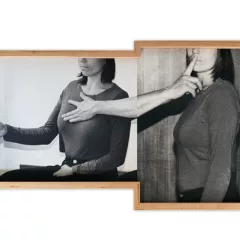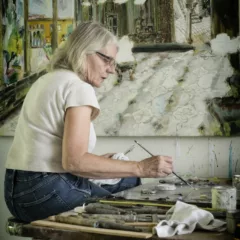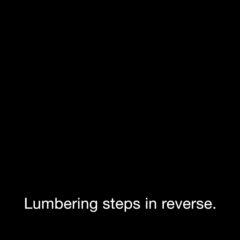[This is part 2 of a 2 part article that first appeared in the March issue of Ceramics Monthly. Click on the Dirt on Delight tag at the bottom of the post to find part 1.]
Not everything in the exhibit is explicitly about body and bodily functions. Numerous pieces revel in clay’s historic use as a decorative medium.

Jeffry Mitchell, Pickle Jar, 2005, glazed ceramic, 15.5 x 13 x 13 inches, collection Ben and Aileen Krohn
In close proximity to Viola Frey’s encrusted Man in the Moon sphere from 1976, Jeffry Mitchell takes the piling on even further with baroque 3-D landscapes—Some Aspects of Landscape, decorated in traditional blue and white, and Zum Goldenen Walde (To the Golden Forest)! in a bronze-like finish. Mitchell’s Pickle Jar, also glazed to a bronze finish, teems with figures and animals. Why pickle jar? “It’s a joke,” said the artist. He paused. “It’s pretty flat-footed.” Well, it is the Versailles of pickle jars.
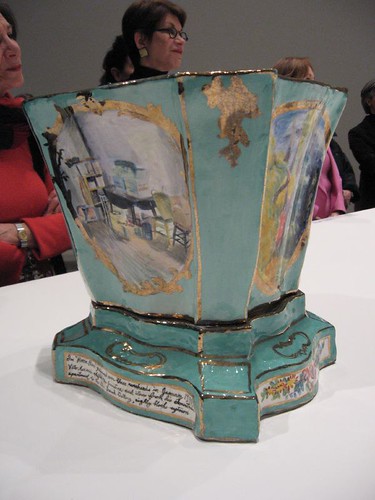
Jane Irish, Vase, Vito Acconci, 1995, low-fire whiteware, glaze luster and china paint, 12 x 11 x 11 inches, collection Elizabeth E. Yohlin
And the Versailles of political engagement is on display in Sevres-inspired vases from Jane Irish, made of humble, low-fire whiteware, some of them hand built, some of the molded. The vases deliberately list and droop and shout their handmade origins as a form of protest. In Vase, Poverty, the lustre decorations and hand-painted cartouches seduce, even as they depict more serious themes than the traditional gavotting dukes and duchesses and reeling peasants.
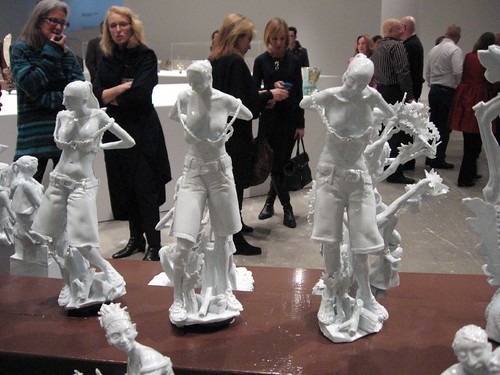
Ann Agee, Agee Manufacturing Co. (Winter Catalogue) detail
Like Irish, many of the artists subvert their sources—the clay vessel and the figurine–at the same time as they salute them. Ann Agee’s Agee Manufacturing Co. (Winter Catalogue), is a shop display of figurines. The figures, which recall Meissen figure tableaus, are in fact handmade, their subjects unsentimental, including a girl dropping a baby from under her skirts as she climbs a tree—a bawdy, Kara Walker-like subject.
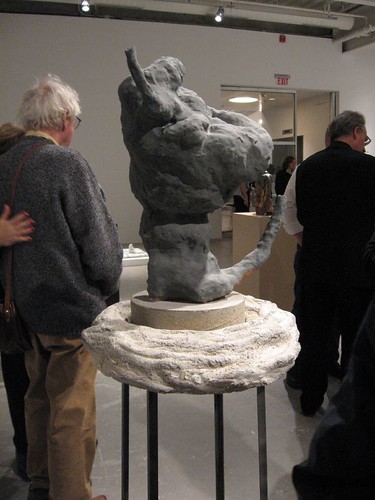
Arlene Schechet, Good Ghost, 2007, glazed ceramic, steel and cast concrete, 66 x 24 x 22 inches, collection Dennis Freedman
Amidst all the sumptuous glazes and hats doffed to the decorative traditions in clay, several bodies of work shout out the humble qualities of the material. Arlene Schechet makes lumpy shapes that suggest animals and intestines and dirt. The cement-y matte gray of her Good Ghost absorbs the light, creating a sort of gray hole in the gallery.
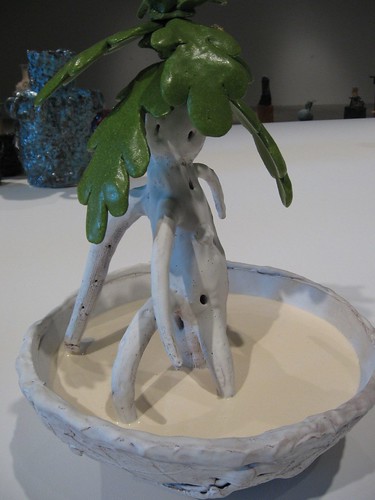
Paul Swenbeck, Mandragora detail, 2008, Egyptian paste, glazed terra clay, paint and resin, 3 pieces, 12 x 12 x 14 inches each. Courtesy the artist and Fleisher/Ollman Gallery
Paul Swenbeck’s ultra-contemporary DIY-aesthetic mandrake roots are made of Egyptian paste, and evoke a child’s clay snakes. Traditionally, the mandrake root is a homunculus with magic powers—animated to life, just like clay in the creation myth.
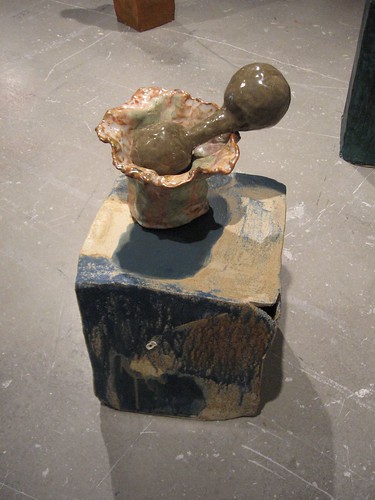
Jessica Jackson Hutchins, Convivium, 2008, detail papier-mache and glazed ceramic, Saatchi Gallery
Also in the show are spectacular and varied works by Lucio Fontana, Jessica Jackson Hutchins, Sterling Ruby, Adrian Saxe, Bevery Semmes, Eugene von Bruenchenhein, Beatrice Wood and Betty Woodman.
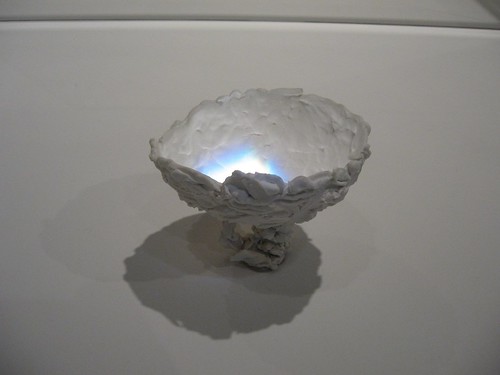
Rudolf Staffel, one of his Light Gatherer series,translucent porcelain
The ICA chose for this show contemporary artists who are stretching clay’s territory and proving just how infinitely malleable a medium it is. But, not to throw out the baby with the bathwater, it has included vessels–ones that hold volumes of meaning—like Rudolf Staffel’s transcendent Light Gatherer bowls–and capture what clay is best at, a discussion of bodies, souls and life.



